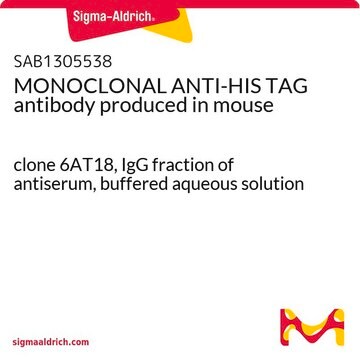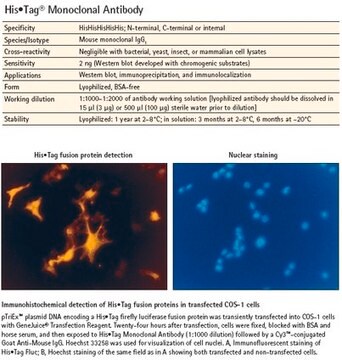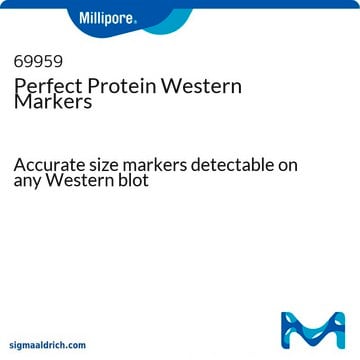A7058
Anti-polihistidina monoclonal
clone HIS-1, purified from hybridoma cell culture
Sinónimos:
Monoclonal etiqueta 6xHis, Monoclonal etiqueta His, Monoclonal etiqueta His6, Monoclonal etiqueta de epítopo 6 H, Monoclonal etiqueta de epítopo HHHHHH, Monoclonal etiqueta hexa His, Monoclonal etiqueta poli-His, Monoclonal etiquetado con histidina
About This Item
Productos recomendados
biological source
mouse
Quality Level
conjugate
peroxidase conjugate
antibody form
purified from hybridoma cell culture
antibody product type
primary antibodies
clone
HIS-1, monoclonal
form
lyophilized powder
packaging
vial of 0.5 mL
concentration
5-11 mg/mL
technique(s)
western blot: 1:2,000 using lysates of Escherichia coli induced to express a 6xHis tagged protein
isotype
IgG2a
storage temp.
2-8°C
target post-translational modification
unmodified
¿Está buscando productos similares? Visita Guía de comparación de productos
Categorías relacionadas
General description
Specificity
Immunogen
Application
Also suitable for dot blot assays and ELISA
Physical form
Preparation Note
Reconstitution
Legal Information
¿No encuentra el producto adecuado?
Pruebe nuestro Herramienta de selección de productos.
signalword
Warning
hcodes
Hazard Classifications
Skin Sens. 1
Storage Class
12 - Non Combustible Liquids
wgk_germany
WGK 2
flash_point_f
Not applicable
flash_point_c
Not applicable
Certificados de análisis (COA)
Busque Certificados de análisis (COA) introduciendo el número de lote del producto. Los números de lote se encuentran en la etiqueta del producto después de las palabras «Lot» o «Batch»
¿Ya tiene este producto?
Encuentre la documentación para los productos que ha comprado recientemente en la Biblioteca de documentos.
Los clientes también vieron
Nuestro equipo de científicos tiene experiencia en todas las áreas de investigación: Ciencias de la vida, Ciencia de los materiales, Síntesis química, Cromatografía, Analítica y muchas otras.
Póngase en contacto con el Servicio técnico
















